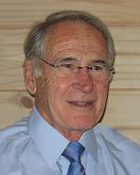 |
Barry J. WelchEm. Prof of Chemical & Materials Eng., U of Auckland N.Z. & Visiting Prof of Chem Eng., U of New South Wales, AustraliaOvercoming The Design And Operating Constraints For Increasing Productivity Of Aluminium Smelting Cells In An Environmentally Responsible Manner Assis International Symposium (9th Intl. Symp. on Advanced Sustainable Iron & Steel Making) Back to Plenary Lectures » |
Abstract:Following anode overpotential measurements and the derivation of the theoretical interrelationship between dissolved alumina concentration and cell voltage (constant current density) in the mid-1960’s, aluminium smelting technology cell designs shifted to central channel multi-point alumina feeding with two rows of prebaked anodes. While this enabled a dramatic reduction in perfluorocarbons (PFC) coevolution at the anodes. Since then cell sizes have necessarily increased from ~80 kA to near 600 kA. With two liquid layers a necessary design feature, spatial variations in process conditions have re-emerged due to the kinetics of alumina dissolution, and the limited electrolyte volume. This has re-introduced limited PFC co-evolution under some operating conditions. Simultaneously, because of other cell design features, zones of high sodium co-deposition in the aluminium have resulted. The higher sodium levels lower the faradaic efficiency from previous achievable levels, as well as dramatically reducing the cathode life. From “autopsies” of cells that been prematurely cut out or undergone “early failure” it becomes evident that a redesign of the cell, coupled with better choice of structural materials, is necessary if the modern technology is to again achieve low energy consumption and maximum environmental responsibility. Illustrative examples will be used. |
|